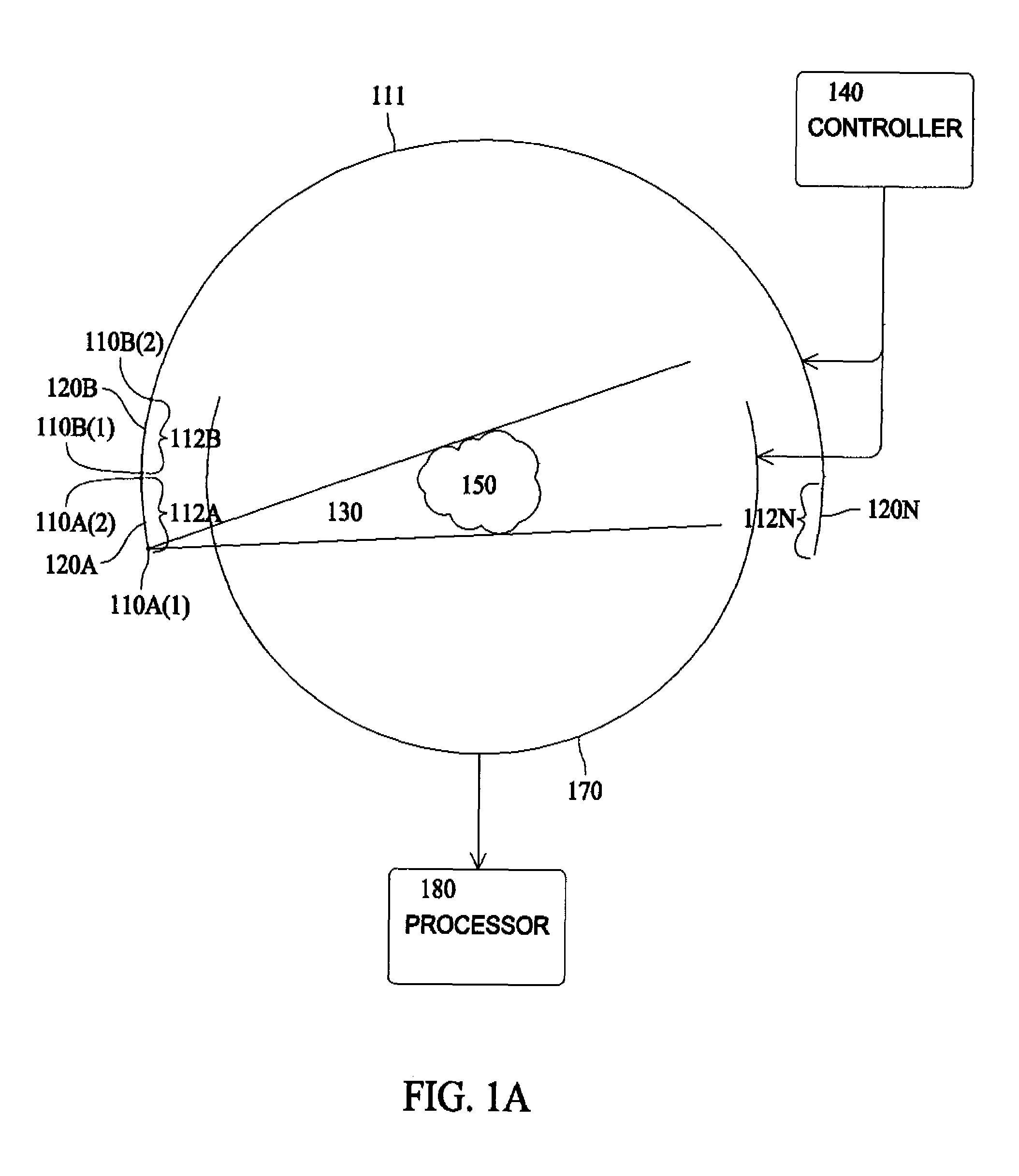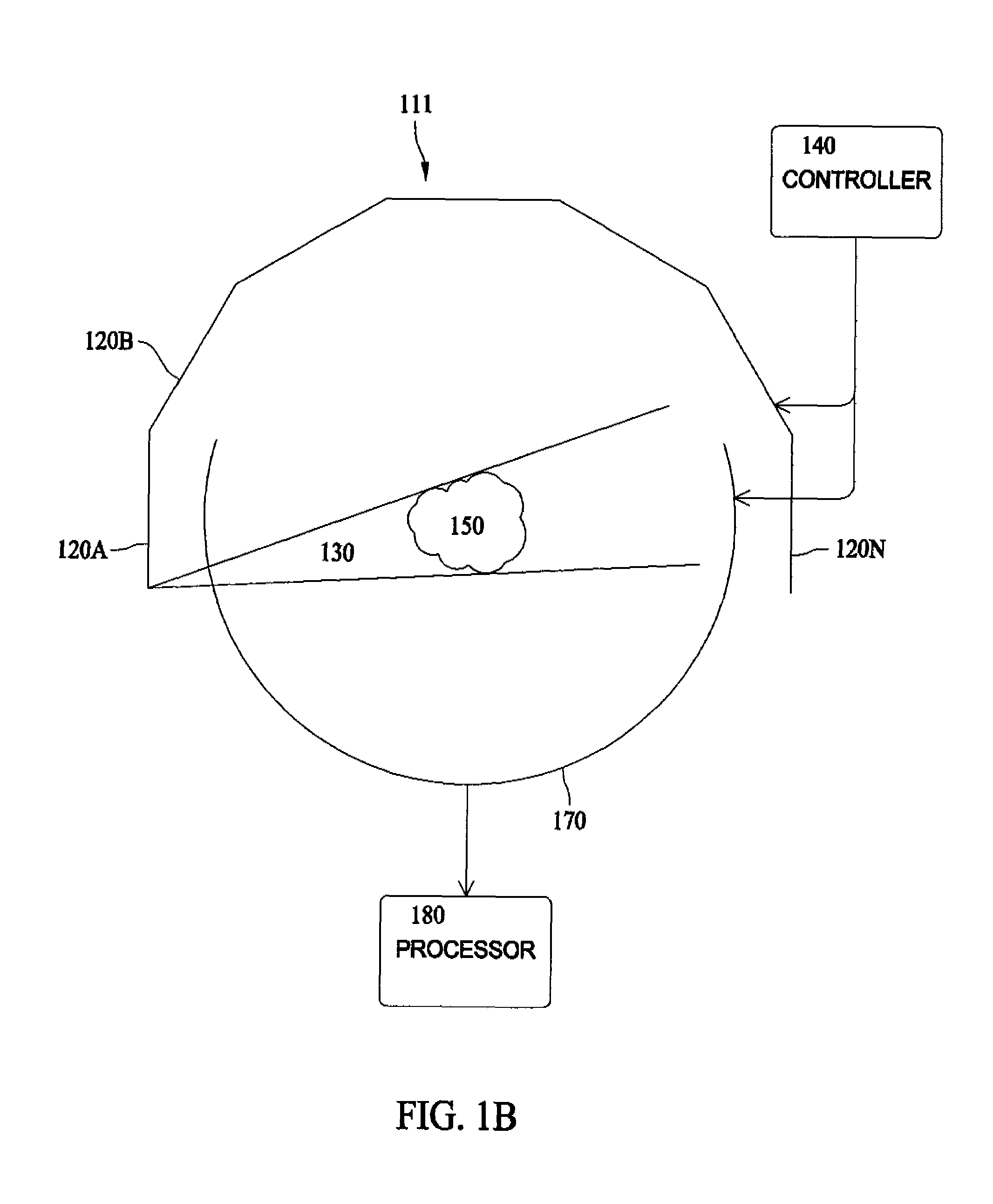Computed tomographic scanner using rastered x-ray tubes
a computed tomographic and x-ray tube technology, applied in the direction of material analysis using wave/particle radiation, instruments, nuclear engineering, etc., can solve the problems of unacceptably long time required to scan objects, slow scanning speed for some applications, and multiplying the number of detectors that are used, so as to reduce the x-ray power required for each tube and reduce the cooling requirement of the anode
- Summary
- Abstract
- Description
- Claims
- Application Information
AI Technical Summary
Benefits of technology
Problems solved by technology
Method used
Image
Examples
Embodiment Construction
[0034]FIGS. 1A–1D are simplified schematic diagrams illustrating CT scanners according to the present invention. In these diagrams, the CT scanner is designed to scan object 150. In many applications, the CT scanner is designed to scan a certain volume or cross-sectional area 150 and objects to be scanned are placed in or moved through the target area 150. For purposes of this application, the terms object and target area or target volume will be used interchangeably. The line 111 represents the source path for the CT scanner and points along the source path shall be referred to as source points. X-ray fans 130 are projected from source points through the object 150 to the detector array 170.
[0035]Generally speaking, the CT scanner is designed so that each point in the object 150 is interrogated by x-ray beams propagating at different angles (typically rays spanning 180 degrees are sufficient). A controller 140 controls the source path 111 and / or detector array 170. For example, the...
PUM
| Property | Measurement | Unit |
|---|---|---|
| voltages | aaaaa | aaaaa |
| angles | aaaaa | aaaaa |
| speed | aaaaa | aaaaa |
Abstract
Description
Claims
Application Information
 Login to View More
Login to View More - R&D
- Intellectual Property
- Life Sciences
- Materials
- Tech Scout
- Unparalleled Data Quality
- Higher Quality Content
- 60% Fewer Hallucinations
Browse by: Latest US Patents, China's latest patents, Technical Efficacy Thesaurus, Application Domain, Technology Topic, Popular Technical Reports.
© 2025 PatSnap. All rights reserved.Legal|Privacy policy|Modern Slavery Act Transparency Statement|Sitemap|About US| Contact US: help@patsnap.com



